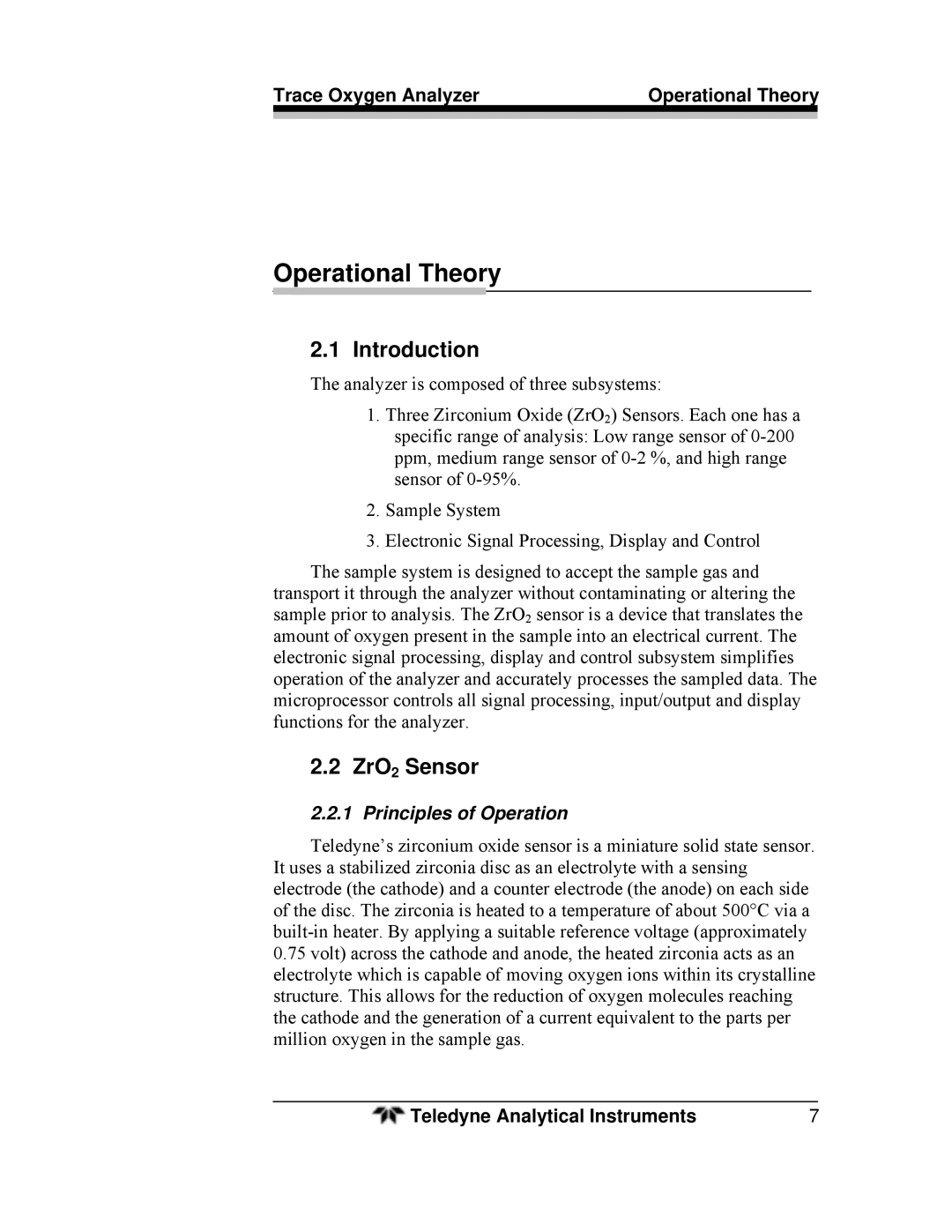
Trace Oxygen Analyzer | Operational Theory | |
|
|
|
Operational Theory
2.1 Introduction
The analyzer is composed of three subsystems:
1.Three Zirconium Oxide (ZrO2) Sensors. Each one has a specific range of analysis: Low range sensor of
2.Sample System
3.Electronic Signal Processing, Display and Control
The sample system is designed to accept the sample gas and
transport it through the analyzer without contaminating or altering the sample prior to analysis. The ZrO2 sensor is a device that translates the amount of oxygen present in the sample into an electrical current. The electronic signal processing, display and control subsystem simplifies operation of the analyzer and accurately processes the sampled data. The microprocessor controls all signal processing, input/output and display functions for the analyzer.
2.2 ZrO2 Sensor
2.2.1 Principles of Operation
Teledyne’s zirconium oxide sensor is a miniature solid state sensor. It uses a stabilized zirconia disc as an electrolyte with a sensing electrode (the cathode) and a counter electrode (the anode) on each side of the disc. The zirconia is heated to a temperature of about 500°C via a
0.75volt) across the cathode and anode, the heated zirconia acts as an electrolyte which is capable of moving oxygen ions within its crystalline structure. This allows for the reduction of oxygen molecules reaching the cathode and the generation of a current equivalent to the parts per million oxygen in the sample gas.
|
|
|
Teledyne Analytical Instruments | 7 | |
